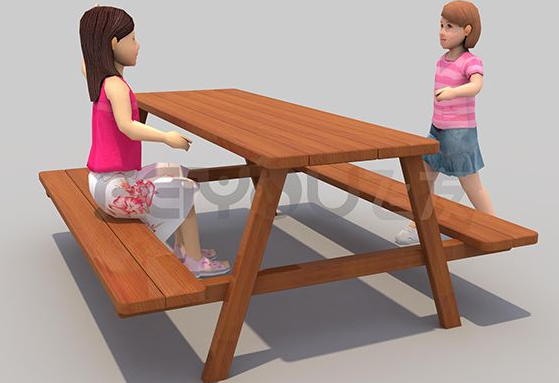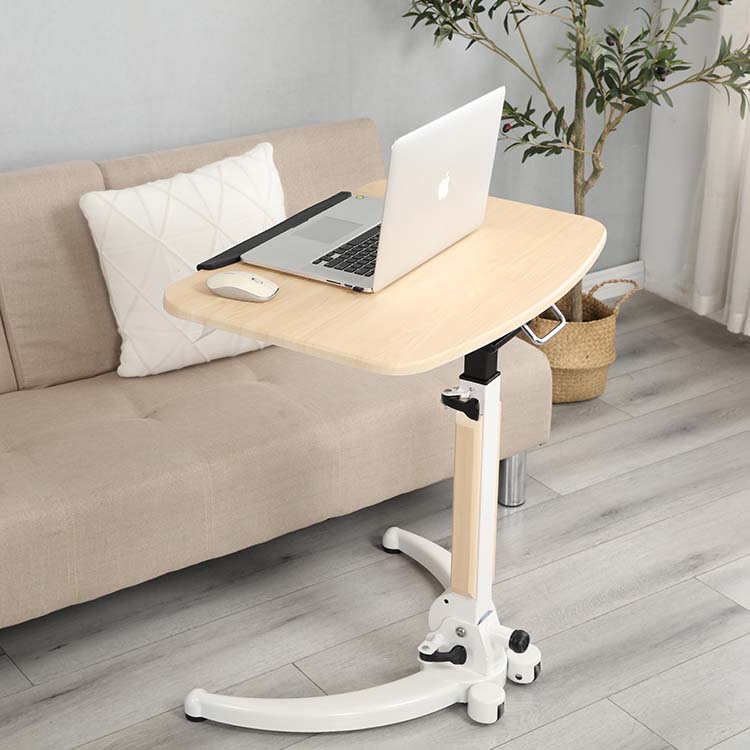In recent years, many bosses of children's furniture companies who have been doing for many years have shown such confusion: The world seems to be growing very fast. Before doing so, you can certainly earn enough money. Now this method will not work. In the past, as long as everything grew, it was well-behaved. The speed of growth is now so slow, and the space for growth is small, and it is always flustered. As a result, people began to talk about "transition and upgrading."
Whenever the development of a business meets a bottleneck, the idea of ​​transformation will emerge. The "transition" voice of the children's furniture industry has been buzzing in recent years. Affected by the financial crisis, export of children's furniture has been hindered. Some export-oriented enterprises that specialize in European and American children's furniture have to open up channels for domestic use and turn them into domestic sales. In recent years, with the gradual saturation of the panel furniture market, many companies have turned to solid wood or other categories... The transformation of the company has been happening.
It is worth noting that most companies at this stage are mainly focused on product transformation and are in the initial price segment of the transition period. Until recent years, the "Internet thinking" of the children's furniture industry has really come.

First, the "post-transition era" of product decline
According to the product life cycle theory, usually a product will have a life span of 3 to 5 years. From entering the market to being eliminated by the market, it will go through four stages: formation, growth, maturity, and recession. Market supply and demand are closely linked.
In the 1980s, the trend of reform and opening up allowed a group of batches of companies to rise and the furniture market supply was less than demand. At this time, the products were in a period of growth. With huge market demand, everything can be sold well, making enterprises "red-eyed" and expanding their production non-stop. Until the 1990s, when the market supply gradually exceeded the warning line of demand, the enterprises occupied the market share by doing the scale and fighting the price war. The market became saturated and the production capacity gradually appeared surplus. After 2007, the imbalance between supply and demand, supply exceeds demand, and the furniture industry is rapidly moving away from the high-speed development stage. The good times are no longer, and it is beginning to face the “post-transformation†of product decline.
In the “post-transition eraâ€, the market exceeds supply, and the focus of the industry has always been on the issue of capacity elimination. In an ideal state, eliminating excess capacity will enable the market to achieve a balance between supply and demand. According to the Long Tail Theory, the industry will enter the "long tail market," and it may also be called the "niche market." In the “long tail marketâ€, the supply and demand balance, the industry will be serious and bad winds, eliminate profiteering behavior, generally presents a healthy state of development. If an enterprise wants to make a profit, it must go through the process of adding value-added products. In other words, in the process of “post-transformation,†identifying and focusing on adding value-added products and creating product and service advantages will be effective measures for the transformation of enterprises, because this caters to the development needs of the future market. Of course, the transition from supply oversupply to the balance between supply and demand will be endless and the market will be fickle, making it difficult for people to determine its end time.
Second, the change from product to Internet thinking
"Post-transformation" also shows that the transformation is no longer limited to the category of products. With the in-depth development of the Internet industry, the transformation of the furniture industry has gradually converged with the Internet. The so-called Internet thinking is a way of rethinking the market, users, products, corporate value chains, and even the entire business ecosystem in the context of the continuous development of technologies such as (mobile) Internet+, big data, and cloud computing. For the physical industry, Internet thinking is a tool to transform the traditional model. The furniture industry uses this tool to redefine and reform production, sales, operations, and channels by further tapping relationships with users.
Looking back at the changing course of China's furniture sales model, the emergence of the Internet has profoundly changed the sales model of the furniture industry. As early as the 1960s and 1970s, due to the backwardness of the residents' living standards, the market mainly focused on hand-made furniture. After the reform and opening up, the emergence of a market economy has led to furniture sales appearing in the form of “front shop and rear factoryâ€. In front of workshops, furniture is sold as stores, followed by processing venues. In the 1980s, department stores began to have furniture management departments, and furniture sales gradually had a special place. In the late 1990s and early 20th century, with the rise of commercial housing, furniture brands and styles gradually became more abundant, and large-scale furniture stores began to emerge. During the period, furniture stores experienced the evolution of “large stall stores†and “shop-store stores.†In the 21st century, the tide of the Internet has brought about earth-shaking changes to the furniture industry. Since then, the O2O era has become a combination of online and offline, and the furniture industry has launched a new sales model.
In addition, in the past, most companies believed in the “one-legged†walking method of factory production and sales. Today, Internet thinking inspired many companies to try “multi-legged†walks. In addition to traditional furniture stores, independent stores, experience stores, etc. The emergence of the method has given many companies an early taste of sweetness, and the furniture industry has seen a diversified pattern of development.
At this node whether or not to transform, companies can say that they are looking for a transition and trying to die. No matter if you embrace the Internet or walk on multiple legs, you are a powerful measure that you actively seek to change. When you successfully transition to the recession period, The stage of post-transformation will surely be another new scene. However, this is a long process. In the end, all winners are winners.
The company's Sports Equipment Co., Ltd. mainly produces outdoor combination slides, kindergarten toys, children's furniture, outdoor development equipment, fitness equipment, naughty Fort, etc. It is a science and technology enterprise integrating design, production, sales, and after-sale. Website:. Advisory telephone. The company's pleasure and dedication to serve you! Factory address: No. 16, Chuangqiang Road, Lucheng District, Wenzhou City Light Industry Park.
Pneumatic Folding Table Sit and stand alternately, healthy and efficient office, is the desk is also a speech training platform I, you can work anytime and anywhere
1. The appearance is simple and beautiful, and the fillet design allows you to reduce collision, which is simple but not simple
2. Up and down, safe and stable, durable, easy to stop
3. Movable base, safe and stable
4. High strength nylon, three-dimensional cutting process, Pu edge, no damage to the floor, ultra quiet movement
5. Easy to use, foldable, easy and convenient, reduce the use of space

Pneumatic Folding Table,Pneumatic Lifting Table,Pneumatic Office Table,Folding Table Computer,Folding Laptop Desk
Suzhou Uplift Intelligent Technology Co., Ltd , https://www.upliftecdesk.com